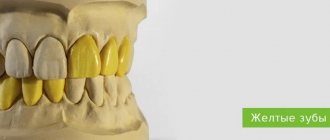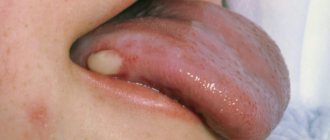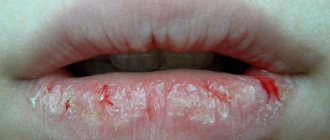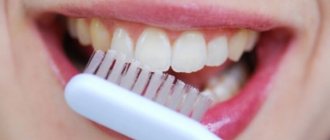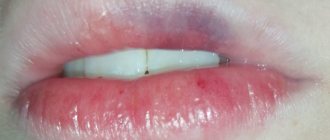Cheilitis is an inflammation of the red border, mucous membrane and skin of the lips. In common parlance, the disease is called jamming. The inflammatory process can be long-lasting and periodically worsen. In healthy young people it often goes away on its own, but in children, the elderly and people with chronic diseases it should be treated with medication. Elderly people have a high risk of leukoplakia and malignancy of the process.
Cheilitis is treated by a dentist, and if necessary, a therapist, pediatrician and other specialized specialists - an endocrinologist, an infectious disease specialist, etc. - are involved in drawing up a treatment plan.
Causes of cheilitis
Cheilitis can be an independent disease and a manifestation of other pathologies of the mucous membranes and internal organs. The most common causes of the disease include:
- Dermatoses. The mucous membranes and skin of the lips can be involved in the pathological process in lichen planus, psoriasis, erythematoses and other skin diseases.
- Unfavorable factors. Exposure to hot and cold air, wind, and excessive exposure to UV rays are especially common causes of cheilitis in people who work outdoors and under special weather conditions.
- Allergic reactions. Allergies can be triggered by chemical factors, ultraviolet rays, cosmetics, etc.;
- Other diseases. Secondary cheilitis often develops against the background of atopic dermatitis, eczema, neuritis of the facial nerve, etc.
Natural protective mechanisms are weakened by such factors as hypothermia, previous surgical interventions, long-term antibacterial therapy, hypovitaminosis, etc.
Ask a Question
Contraindications
Like many drugs, Levomekol has contraindications:
- individual intolerance to the components of the medication;
- hypersensitivity of the body;
- fungal infections of the epidermis;
- tendency to allergic reactions;
- psoriasis.
The official instructions for use indicate that in pediatrics the ointment is prescribed starting from 3 years of age. However, many pediatricians, based on the harmlessness of Levomekol, allow its use from infancy.
Symptoms and types of disease
Cheilitis on the lips can manifest itself in different ways depending on the form of the disease. Thus, the exfoliative type of inflammation appears more often in women; its main symptom is peeling. The disease is based on neurological and endocrine disorders. Peeling occurs on the red border of the lips and does not affect the skin and mucous membranes. The disease rarely spreads to the entire red border, so part of it remains unchanged.
With severe dry skin, peeling is accompanied by symptoms such as:
- feeling of dry lips;
- burning;
- formation of easily detachable scales.
The disease is long-term and sluggish, with periods of exacerbation occurring from time to time. It rarely goes away on its own. With the exudative form, pain, swelling of the lips, and the formation of large crusts may occur.
Glandular cheilitis develops against the background of the proliferation of minor salivary glands and their subsequent infection. With congenital pathologies, signs of such inflammation of the lips are present in almost all cases. Acquired overgrowth may be associated with chronic diseases of the periodontal tissues, tartar, multiple caries - diseases leading to infection of the dilated ducts. Lesions of the lower lip with this form of cheilitis are more common. The disease develops with the appearance of dry lips, which is initially easy to correct with the help of cosmetics. Subsequently, cracks begin to form, deepen and begin to bleed. The condition is aggravated by the constant desire to lick dry lips - cracks and ulcers can become weeping and become permanent due to the inelasticity of the skin of the lips.
Contact allergic cheilitis develops after exposure to an allergen - an irritant. The most common of them are components of lipsticks and other care products. Allergies can also be associated with bad habits, for example, constantly keeping pencils, pens and other foreign objects in the mouth. Musicians may develop occupational cheilitis due to constant contact of the mouthpieces of wind instruments with their lips. The main symptoms of the disease include:
- severe itching;
- burning;
- swelling of the lips;
- redness of the skin and mucous membranes.
Manifestations intensify upon contact with the allergen. Bubbles of different sizes may form; their spontaneous or accidental opening leads to the formation of ulcers and cracks. Chronic forms of allergic disease are accompanied by peeling, slight itching and the absence of other signs of inflammation.
Actinic cheilitis belongs to the category of diseases that are based on increased sensitivity to weather and other external factors. Usually occurs in response to sun exposure. Exudative forms of this disease are accompanied by the formation of crusts. Sometimes small blisters form, the opening of which leads to painful erosions. In the absence of exudate, the main symptoms are pain, dryness, and burning of the lips. Actinic cheilitis often degenerates into precancerous diseases.
In atopic cheilitis, the main cause of the disease is dermatitis of the same name, or neurodermatitis. It appears in people with an allergic predisposition, and the triggering factor can be medications, cosmetics, food products, as well as microorganisms and their waste products. The disease is accompanied by redness of the lips, itching and peeling of the red border, and damage to the corners of the mouth. After acute symptoms subside, peeling and thickening of the skin may occur. Dryness stimulates the formation of cracks.
Macrocheilitis is part of the Rossolimo–Melkersson–Rosenthal syndrome. Appears against the background of neuritis of the facial nerve and the symptom of a folded tongue. Develops due to infectious-allergic effects against the background of genetic predisposition. Manifests itself with the following symptoms:
- lip enlargement;
- severe itching;
- swelling of other parts of the face;
- bluish-pink color of swollen areas of the lips.
One or both lips, cheeks, and upper parts of the face may be affected. Neuritis leads to facial asymmetry, and the nasolabial fold is smoothed out.
Hypovitaminous cheilitis of the lips develops against the background of a deficiency of B vitamins. Burning and dryness of the oral mucosa and lips appear. The mucous membranes become swollen and red, peeling occurs on the red border, and cracks appear. They are prone to bleeding, which is also associated with a lack of vitamins. The tongue may become enlarged and can easily become imprinted with teeth.
With candidal cheilitis, the inflammatory process is accompanied by the formation of white plaque on the mucous membranes. The cause of this disease is the proliferation of a fungus of the genus Candida; it often affects infants, people after radiation and chemotherapy, as well as patients with immunodeficiencies. Cheilitis develops with long-term use of antibiotics and immunosuppressants.
What is Levomekol used for?
Levomekol has a multifaceted therapeutic effect:
- quickly reduces the inflammatory process, prevents its spread to healthy tissues;
- prevents the growth and reproduction of bacterial infectious agents;
- quickly eliminates swelling by normalizing microcirculation;
- ensures delivery of nutrients and biologically active substances, as well as molecular oxygen, to the affected tissues;
- stimulates the regeneration of inflammatory cells of all layers of the epidermis;
- increases immunity at the local level.
The ointment quickly removes all inflammatory processes on the skin
It is worth noting that the presence of purulent discharge and necrotic tissue does not prevent Levomekol ointment from performing its function. The drug can be used to disinfect and accelerate tissue regeneration.
Diagnostic features
If inflammation appears on the lip, it is advisable to visit a therapist, for children a pediatrician, if indicated, an infectious disease specialist, a dentist, or other specialized specialists. Diagnosing cheilitis is usually not difficult - a specialist will conduct an examination, listen to complaints and prescribe a series of tests. If the allergic nature of the disease is suspected, allergy tests may be recommended, and if plaque appears, it is advisable to take a scraping. To detect endocrine and other disorders that may cause the disease, biochemical blood tests and other diagnostic methods are often prescribed. In rare cases, a biopsy is required to differentiate cheilitis from other pathologies. This will help to exclude the malignant or precancerous nature of inflammatory formations and prescribe the correct treatment.
Analogs
Analogs of Levomekol ointment have a bactericidal and healing effect. But the difference lies in the active ingredient of the drug. So, among the analogues one can name Fugentin, Levosin (additionally has an analgesic effect), Protegentin, Fastin-1, Salicylic-zinc paste.
Synonyms, that is, drugs with the same substance (but in higher concentration) as Levomekol ointment, can be considered Netran and Levomethyl. Substitute medications can only be prescribed by the attending physician.
Treatment methods
The treatment plan for cheilitis is developed individually, depending on the form of the disease, the severity of symptoms, and the characteristics of the health condition. Thus, in the treatment of the exfoliative form of the disease, the key element of effective treatment is the impact on the psycho-emotional sphere: you will need to contact a neurologist or psychoneurologist to prescribe sedatives and antidepressants according to indications. Consultation with an endocrinologist may be required.
Local treatment may involve the use of laser or ultrasound physiotherapy, local anti-inflammatory drugs, and less commonly, radiation therapy. Elimination of excessive dryness is possible with the help of hygienic lipsticks. To speed up recovery, the doctor may prescribe vitamin therapy, UVOC and other methods of maintaining the body's defenses.
Therapy for glandular cheilitis consists of using local anti-inflammatory agents. Antibacterial, antiviral, and hormonal ointments can be used. A radical method of therapy is electrocoagulation of the salivary glands or their surgical removal, as well as laser ablation. These methods are used when conservative methods are ineffective. After the main course, the doctor will prescribe medications to prevent relapses - they will eliminate dry or weeping skin. It is important to sanitize the oral cavity in a timely manner and undergo professional teeth cleaning.
Treatment of atopic cheilitis consists of eliminating irritating factors. Drugs with antipruritic and anti-inflammatory effects can be used locally, and therapy with antihistamines with a systemic effect is also carried out. The use of glucocorticosteroids allows you to get quick relief, but it is important to strictly adhere to medical prescriptions - they can only be used for a short time. It is important to follow a hypoallergenic diet and remove allergenic foods from the diet.
Therapy for meteorological cheilitis begins with limiting harmful effects, for example, insolation. Local treatment is usually carried out - the doctor prescribes hormonal agents and protective creams, including those with SPF. The course of treatment is supplemented with vitamins - vitamin-mineral complexes or individual preparations (B, PP, C, etc.).
In the treatment of macrocheilitis, immunocorrective and antiviral therapy is of particular importance. The doctor may prescribe:
- hormonal anti-inflammatory drugs of systemic action;
- novocaine blockades;
- antihistamines, etc.
Laser therapy can have a positive effect on the correction of the entire triad of symptoms. Other physical therapy methods have been successful in treating facial neuritis.
Use of Levomekol ointment in gynecology
Levomekol is successfully used in gynecology and urology.
In gynecology, therapy is carried out using tampons with ointment applied to them. A similar method is indicated for the treatment of the following conditions:
- inflammatory erosion of the cervix;
- inflammation of the uterine appendages (ovaries, fallopian tubes);
- divergence of vaginal sutures after ruptures during childbirth or operations.
The treatment system consists of the following sequence of actions:
- before use, a woman must thoroughly wash and dry the skin of the treatment area and perineum;
- if therapy is used after the divergence of vaginal sutures or after operations, then the sutures must be treated with a weak solution of potassium permanganate or furatsilin;
- you need to make a small cotton swab, put an ointment on top of it measuring 15 mm x 15 mm, and 5 mm high;
- insert into the vagina at night and remove in the morning;
- if therapy is used after the divergence of vaginal sutures or after operations, then the ointment is applied to a gauze bandage and applied to the sutures. Then put on clean underwear (if necessary, you can additionally use a pad). The dressing remains on for 2 to 6 hours.
Using the method described above, the active substance of the ointment is delivered to the affected area and absorbed into the surrounding vaginal tissue.
In urology, Levomekol is used in the treatment of balanitis and balanoposthitis in men, as it has anti-inflammatory and antimicrobial effects. The treatment system consists of the following sequence of actions:
- before applying the ointment, the head of the penis is washed with a weak solution of potassium permanganate or furatsilin, removing pus and dead tissue;
- Levomekol is applied to the affected area in a dense layer.
The remedy is applied 1-2 times a day until complete recovery. After the inflammation is relieved, Levomekol is applied for another week, 1 time per day - in the evening, before bedtime.
Possible complications
Failure to see a doctor in a timely manner often causes serious complications. The disease itself often does not pose a serious health risk. But only an experienced specialist can tell you how to treat cheilitis. Self-medication can lead to unpleasant consequences and provoke the occurrence of a chronic form of the disease. In addition, cheilitis is dangerous because its symptoms can mask malignant tumor processes. It is important to remember that some forms are prone to malignancy - cheilitis may be followed by precancerous conditions.
Why do women's lips dry out?
Why do women's lips dry out most often? The problem is choosing cosmetics: the wrong selection of skincare products can cause irritation. Therefore, it is better to choose hypoallergenic products approved by dermatologists.
Also, the condition of the lips is affected by decorative cosmetics, in particular, matte lipstick: it lasts a long time, does not leave marks, but dries out the skin greatly. Therefore, it is worth using a moisturizing balm before applying it. Ideally, switch to using only balm or moisturizing lipstick.
Prognosis and prevention
With timely treatment and the absence of malignancy processes, the prognosis is almost always favorable. If the therapy has caused noticeable cosmetic defects, you can resort to methods for correcting the appearance of the lips.
To prevent complications, it is important to understand whether you are at risk. The presence of allergic diseases and dermatoses, chronic endocrine diseases, and wearing dentures increase the risk of developing pathology. To prevent the appearance of cheilitis, it is important to adhere to several rules:
- regularly visit the dentist, sanitize the oral cavity, remove tartar;
- promptly replace outdated fillings and orthopedic structures, contact after chipped teeth and injuries to prevent lip injury from the sharp edges of fillings and enamel;
- For the manufacture of prostheses, contact only professionals;
- eat properly and nutritiously to prevent hypovitaminosis;
- try to avoid prolonged exposure to the sun and use products with SPF, including for lips;
- be attentive to your health and promptly treat diseases of the gastrointestinal tract, endocrine, nervous system, and internal organs.
Levomekol or Vishnevsky ointment. What's better?
Let's start with the fact that Vishnevsky ointment and Levomekol, although they are used in similar cases, still have a multidirectional spectrum of action. Thus, Vishnevsky ointment is effective when the wound is in the process of regeneration. Therefore, it cannot be used when the wound is suppurated or severely inflamed. Yes, the drug contains an antiseptic, but its concentration is not enough to provide a bactericidal effect. Moreover, tar and castor oil stimulate blood circulation in the affected area, which worsens the situation.
This is why Vishnevsky’s ointment is not as effective, since Levomekol has higher antibacterial activity due to the presence of an antibiotic in it and accelerates the process of outflow of pus from the wound. Also important are the following distinctive features that determine the superiority of Levomekol ointment:
- no unpleasant odor;
- higher repair characteristics;
- does not provoke irritation in the treatment area;
- when treating boils, Levomekol quickly initiates an abscess and opening of the abscess, followed by wound healing.
But if Vishnevsky ointment helps the patient, then there is little point in changing it.
